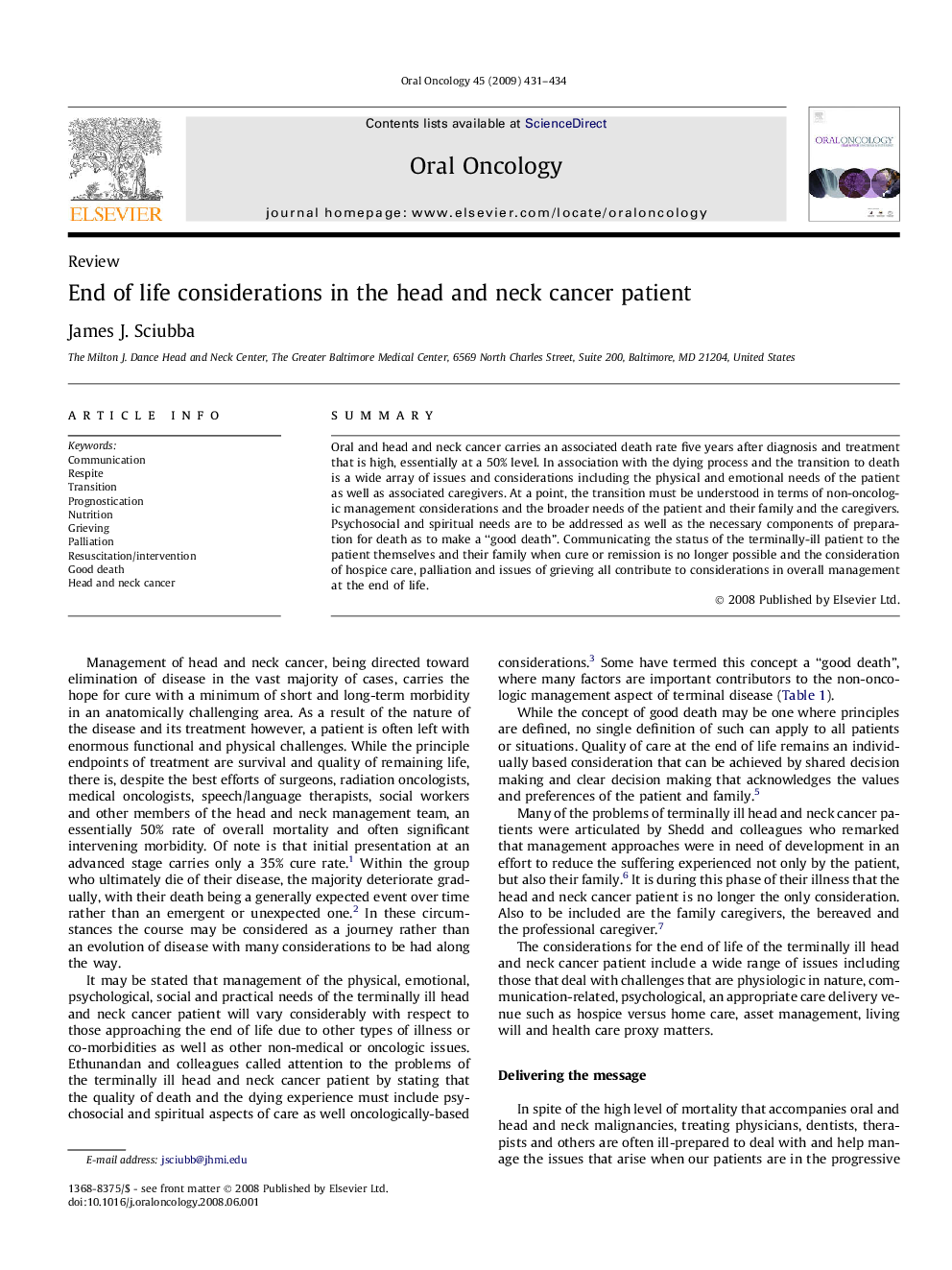| Article ID | Journal | Published Year | Pages | File Type |
|---|---|---|---|---|
| 3165526 | Oral Oncology | 2009 | 4 Pages |
SummaryOral and head and neck cancer carries an associated death rate five years after diagnosis and treatment that is high, essentially at a 50% level. In association with the dying process and the transition to death is a wide array of issues and considerations including the physical and emotional needs of the patient as well as associated caregivers. At a point, the transition must be understood in terms of non-oncologic management considerations and the broader needs of the patient and their family and the caregivers. Psychosocial and spiritual needs are to be addressed as well as the necessary components of preparation for death as to make a “good death”. Communicating the status of the terminally-ill patient to the patient themselves and their family when cure or remission is no longer possible and the consideration of hospice care, palliation and issues of grieving all contribute to considerations in overall management at the end of life.
